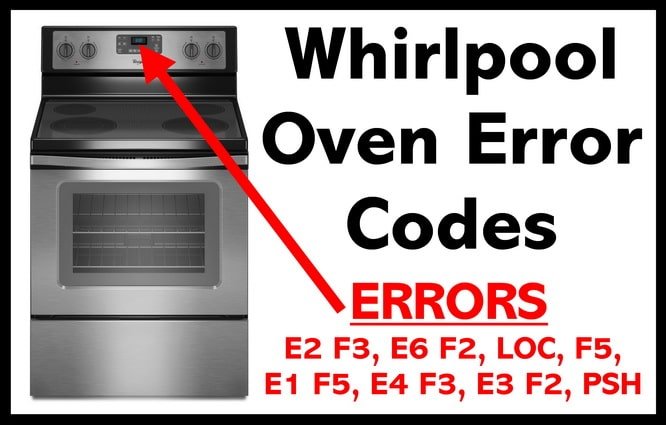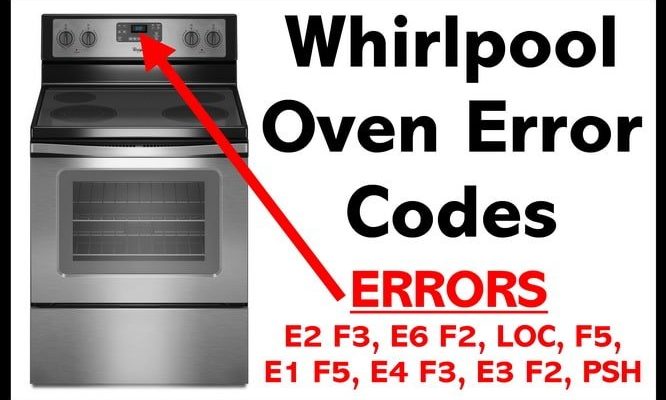
Imagine you’re preparing a delicious meal and are about to preheat your oven, only to be greeted by the puzzling “LE” error code. It’s like trying to take off for a flight only to find out at the last minute that there’s a delay. Frustrating, right? But here’s the good news: understanding what these codes mean can save you a lot of time and frustration. The “LE” error code generally indicates a problem with the lock mechanism on your oven. It’s as if your oven is telling you, “Hey, I can’t lock or unlock the door properly!” This isn’t just a trivial issue; it’s a safety feature designed to protect you and ensure the appliance operates correctly.
Understanding the “LE” Error Code
So, what exactly is the “LE” error code trying to communicate? In the simplest terms, it’s an indication that there’s something wrong with the oven door lock. Think of the oven door lock as a gatekeeper; it’s there to ensure everything remains sealed and secure while your oven is in operation. If the lock isn’t working properly, it could mean that the door is not closing completely or that it can’t open after it’s supposed to.
Many Whirlpool models are equipped with a lock mechanism that engages during certain operations, like self-cleaning. It’s a safety measure that prevents anyone from accidentally opening the oven and coming into contact with dangerously high temperatures. If the system detects that the lock isn’t functioning as it should, it triggers the “LE” error as a warning signal. This might be due to the lock being stuck, electrical issues, or even a software glitch.
To make things clearer, imagine the lock is like a security guard. If the guard can’t get up from their post or is stuck in place, the facility (your oven) won’t run as it should. The error code is your oven’s way of telling you, “Hey, the guard’s not doing their job. Let’s fix this before proceeding!”
Common Causes of the “LE” Error Code
Now that we know what the “LE” error code means, let’s dive into why it happens. One common culprit could be a jammed lock. Over time, debris or residue from cooking can accumulate around the lock mechanism, preventing it from moving freely. It’s like trying to close a door with a pebble stuck in the hinge—the result is a door that won’t shut properly.
Another potential cause could be an electrical fault. The lock mechanism is typically controlled by an actuator connected to your oven’s control board. If there’s a fault in the wiring or the connector, the signal to lock or unlock might not be reaching the motor. This is akin to having a phone with a dead battery; no matter how many times you tap the screen, it won’t respond because it lacks power.
Lastly, software issues can sometimes throw a spanner in the works. If there’s a glitch in the oven’s firmware, it might incorrectly interpret signals and generate an error code even when there’s no physical problem. Think of it as your computer freezing on an update screen—it’s frustrating, but it can often be resolved with a restart or update.
How to Troubleshoot and Fix the “LE” Error Code
So, you’ve identified the “LE” error code and have a clue about what might be causing it. The next step is tackling the issue head-on. The first thing you can try is a simple reset. Like rebooting a stubborn computer, turning the oven off at the circuit breaker for a few minutes and then turning it back on can sometimes resolve software glitches causing the error.
If a reset doesn’t work, inspect the lock mechanism for any visible obstructions like food particles or debris. Carefully clean around the area to ensure that nothing is preventing the lock from functioning as it should. Imagine it like cleaning crumbs out of a keyboard—sometimes a little tidying up can go a long way.
If neither of these solutions works, it might be time to consider calling in a professional. Electrical faults and deeper mechanical issues require expertise beyond a typical DIY fix. A certified technician can diagnose the problem and determine whether parts need replacement, ensuring that your oven is safe to use once more.
Preventative Measures and Next Steps
Now, prevention is always better than cure. To minimize the chances of encountering the “LE” error code in the future, regular maintenance of your oven is key. Make it a habit to clean the lock area regularly, especially after using the self-cleaning function. This proactive approach helps prevent debris build-up, ensuring the lock mechanism can operate smoothly.
Additionally, always follow the manufacturer’s guidelines when using the self-cleaning feature or any other function that involves the lock. Misusing these features can sometimes lead to errors, so understanding your oven’s manual is crucial. It’s like knowing the rules of a game—following them ensures everything runs smoothly.
In conclusion, while the “LE” error code on your Whirlpool oven or range can be an unwelcome surprise, it’s not the end of the world. With a bit of patience and know-how, you can resolve the issue and get back to cooking up your favorite meals in no time. If all else fails, remember that professional help is just a call away, ready to ensure your appliance is back in perfect working order.
